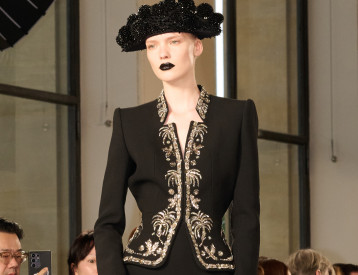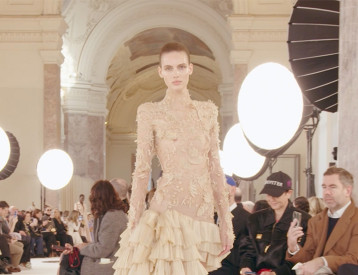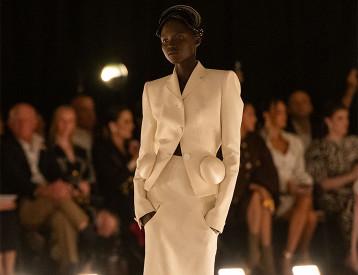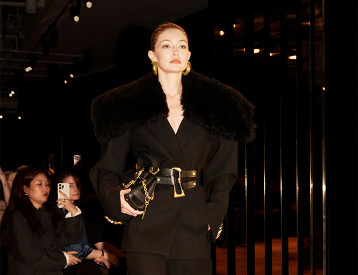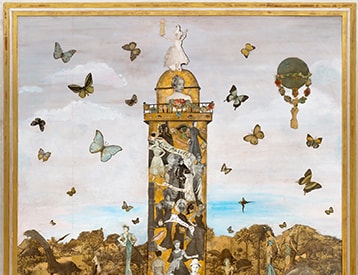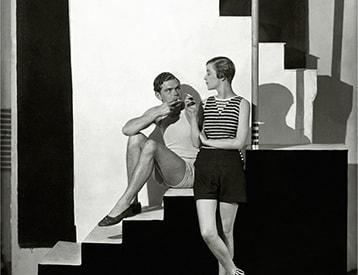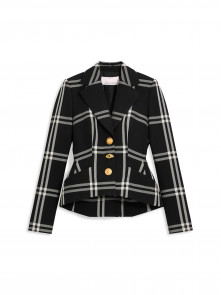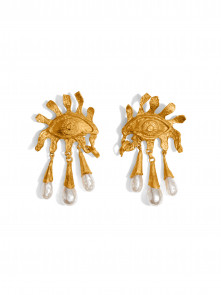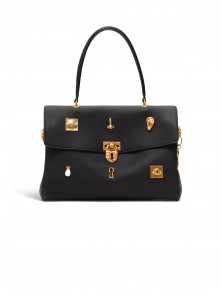PRINTEMPS-ÉTÉ 2026
SPRING-SUMMER 2026
READY-TO-WEAR
SPRING-SUMMER 2026
DANCER IN THE DARK
Recently, I read that while attendance to movies has plummeted in recent years, museum attendance has skyrocketed. It made perfect sense to me. Our phones are a slophouse of cheap thrills, with lifespans no longer than a few hours.
READY-TO-WEAR
SPRING-SUMMER 2026
DANCER IN THE DARK
Recently, I read that while attendance to movies has plummeted in recent years, museum attendance has skyrocketed. It made perfect sense to me. Our phones are a slophouse of cheap thrills, with lifespans no longer than a few hours.
And yet is that really what we want? It seems to me that we know, intuitively, that there’s inherent, urgent value to placing our present moment into the context of some broader narrative. Maybe the hunger today is less to be entertained, and more to be inspired. Entertainment isn’t just omnipresent—it’s inescapable. But inspiration—genuine inspiration—feels precious and rare.
That’s why I leapt at the opportunity to show at Centre Pompidou, particularly in the same gallery that had housed the Brancusi retrospective just 18 months prior. Not because I wanted this collection to explicitly center on the relationship between fashion and art, but because I felt, and feel, that going to a Schiaparelli show should feel like going to a museum: an experience equally inspirational, aspirational, and reassuring. It should awaken the sensation of dancing alone at home after work. It should feel Iike dancing in the dark—just as liberating; just as private; just as joyful.
Schiaparelli RTW has always existed at the crossroads of commercial potential and creative catharsis. Elsa wasn’t an architect of new silhouettes—that was never the point. Nor was she a brand marketing genius. She was, however, a genius in how she engaged with culture. She was, as Yves Saint Laurent said of her, “a comet lighting up the night sky in Paris, intent on domination.”
In this collection, you’ll see her love of tension, of unexpected frictions. You see it in the Schiaparelli jacket: Sober, clean, and sharp shouldered, without any grandiose flourishes, it’s a celebration of discipline itself, with its controlled silhouette (or “tailleur riguor,” as they say in the atelier). That “hard chic” continues in a series of long, lean, slip-on column gowns. Though they represent a kaleidoscope of techniques, they’re united by their focused palette of black, bone white, and crimson red. And at the heart of this collection is the trompe l’oeil knitwear, taken from my drawings over the last few months and executed in three-tone jacquards—a tribute to Elsa’s own knits. Shocking then, shocking now.
The accessories are equally designed to remember, surprise, delight, from shoes to new incarnations of the Secret, our padlocked handbag, here made in soft dimensions to recall Dali’s oozing, melting clock. Every shoe and handbag begins with drawings, which I think you can see and feel in the final products.
After my first RTW collection, I’d often hear, “This is ready-to-wear? I thought I was looking at couture!” For a long time, I didn’t know what to make of that comment, which always sounded like criticism somehow, as if making ready to wear that yearned to be as extraordinary, as thoughtful, as couture, was really a liability. But six years into this chapter at Schiaparelli, what felt like a liability now feels like a strength. Who doesn’t want to participate in a fantasy made easy for daily life? Why can’t fashion—even everyday fashion—be art?
The world today can feel relentless, a cultural black hole. All creative people can do is cling to what feels right to you—to us. All we can do is move to the beat of our clients’ hearts. All we can do is make clothes that make their wearer feel the freedom and ecstasy we want to feel ourselves—on stage for a brief moment, unashamed, dancing in the dark.
Daniel Roseberry
